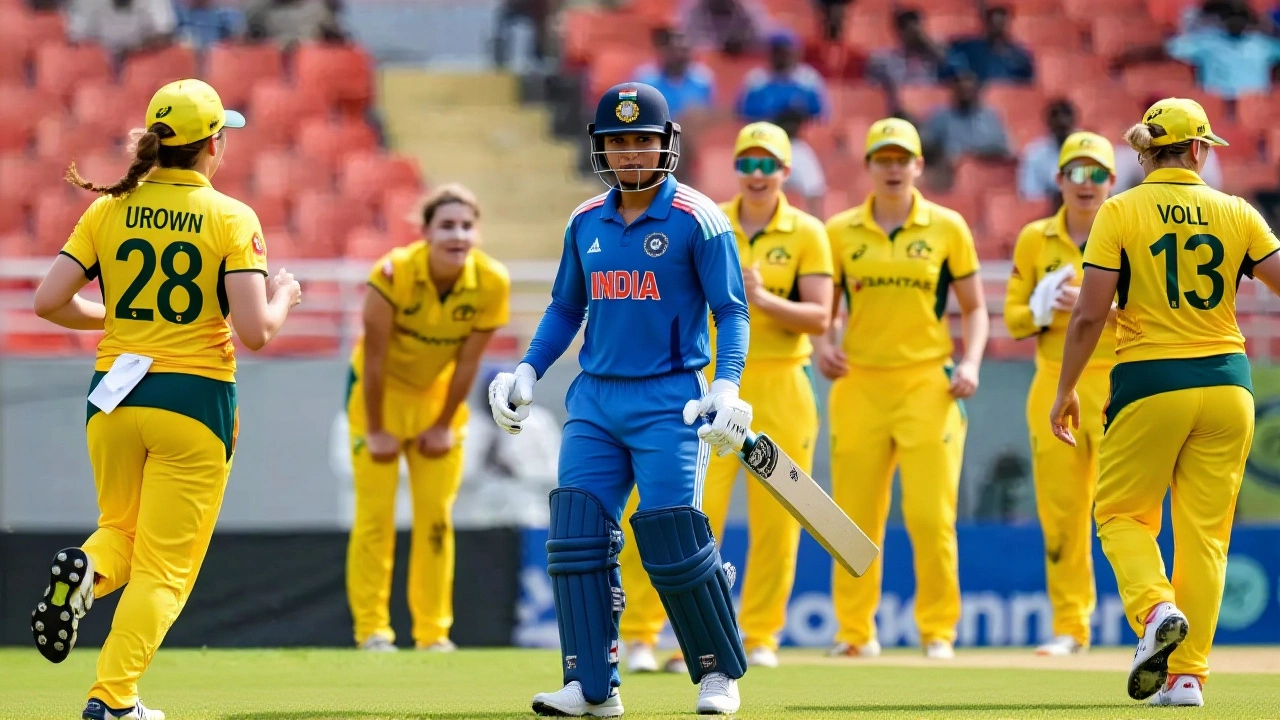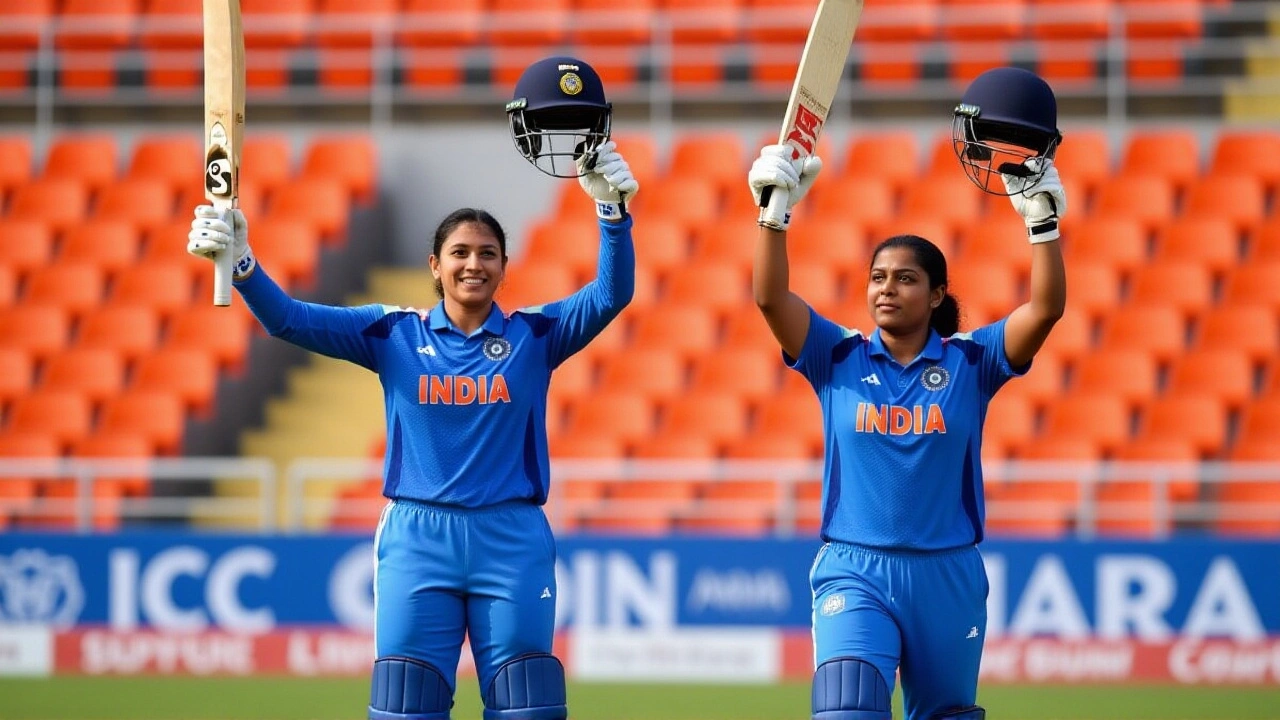
When Harmanpreet Kaur, captain of India women's cricket team led her side into the series‑deciding third One Day International against Australia at New Delhi on 20 September 2025, the result was a heavy loss and, oddly enough, a financial sting.
The International Cricket Council’s (ICC) match referee G.S. Lakshmi of the Emirates ICC International Panel announced that India had fallen two overs short of the required rate, triggering a 10 percent deduction from each player’s match fee – the equivalent of five per cent per missing over under Article 2.22 of the ICC Code of Conduct.
Match recap and the over‑rate breach
The third Women's One Day InternationalNew Delhi turned into a high‑scoring affair, with Australia posting 286/5 in their 50 overs. India’s chase crumbled at 210/7, sealing a 76‑run defeat and handing Australia the series 2‑1.
During the game, the on‑field umpires – Lauren Agenbag and Janani Narayanan – along with third umpire Gayathri Venugopalan and fourth umpire Vrinda Rathi, monitored the clock closely. After accounting for time allowances, the officials concluded that India had delivered only 48 overs in the allotted 50‑over window.
Because the ICC’s over‑rate policy is crystal clear – five per cent of the match fee per missing over – the two‑over shortfall translated into a straight‑forward 10 percent penalty. Over‑rate enforcement has become stricter in recent years, and this incident underscored how even top‑tier women’s sides are not exempt.
Why the ICC clamps down on slow over‑rates
Article 2.22 of the ICC Code of Conduct, introduced after several high‑profile controversies in men’s cricket, mandates that teams maintain a minimum of 15 overs per hour in ODIs. The rule aims to preserve broadcast schedules, satisfy stadium‑goers, and keep the game’s rhythm intact.
In practice, the ICC uses a combination of manual timing by umpires and electronic monitoring. If a side falls behind, the match referee can impose sanctions ranging from fines to, in extreme cases, suspension of players.
Historically, the men’s game has seen fines of up to 20 percent of a player’s fee. Women’s cricket, however, has seen fewer publicised penalties, making this – the first major over‑rate fine for India’s women’s team – a noteworthy precedent.
Team reaction and the role of the captain
In the post‑match press conference, Harmanpreet Kaur accepted responsibility, stating, “We fell short on the clock and we respect the decision. Our focus now is to learn and improve.” By pleading guilty, she avoided a formal hearing, streamlining the disciplinary process.
Board of Control for Cricket in India (BCCI) officials, speaking on behalf of the team, emphasized that the fine would be deducted directly from each player’s match fee. They also hinted at a forthcoming review of the team’s pacing strategy, especially under the pressure of tight deadlines.
Cricket Australia praised the ICC’s consistency, noting that “maintaining the over‑rate is a shared responsibility across all international fixtures,” while also recognising India’s fighting spirit throughout the series.
Impact on the series and wider women’s cricket
The fine adds a financial sting to an already bruising series loss. For many of the Indian players, a match fee of roughly $4,500 now shrinks by $450 each – a tangible reminder that discipline on the field extends beyond runs and wickets.
Beyond the wallet, the episode may influence how teams schedule practice sessions. Coaches are likely to incorporate time‑management drills, ensuring bowlers can maintain a brisk pace without sacrificing quality.
From a commercial standpoint, broadcasters and sponsors monitor over‑rate compliance closely. Frequent delays can erode viewer confidence, especially in markets where women’s cricket is still carving its niche.

Looking ahead – upcoming fixtures and what to watch for
India’s women will regroup for the upcoming tri‑series in Sri Lanka, slated to begin in early November 2025. The ICC has warned that any repeat offence could see penalties rise to 15 percent per missing over.
Analysts suggest that a strategic shuffle – perhaps promoting faster bowlers to the opening spell and shortening field‑setting discussions – could help the side keep pace.
Meanwhile, the ICC is reviewing its over‑rate guidelines to see if a tiered system (different thresholds for men’s and women’s games) might be warranted, though officials argue that the core principle of maintaining the sport’s flow should remain uniform.
Key facts
- Fine: 10 % of each player’s match fee (≈ $450 per player)
- Offence: Two overs short of required rate in 50‑over ODI
- Match referee: G.S. Lakshmi
- Series result: Australia win 2‑1
- Location: New Delhi on 20 Sept 2025
Frequently Asked Questions
How does the over‑rate fine affect the Indian players financially?
Each player earned a match fee of roughly $4,500 for the ODI. The 10 percent penalty reduces that amount by about $450, meaning the final payout is closer to $4,050 per player. For many, especially those lower in the contract hierarchy, that deduction is a noticeable hit.
What specific rule did India breach?
The team fell two overs short of the ICC’s mandated minimum over‑rate of 15 overs per hour for ODIs, violating Article 2.22 of the ICC Code of Conduct which stipulates a fine of five per cent of a player’s fee for each missing over.
Why did captain Harmanpreet Kaur plead guilty?
By accepting responsibility, Kaur avoided a formal disciplinary hearing, which could have delayed the fine’s imposition and added administrative burden. Her admission also signals accountability, a move praised by the BCCI and ICC.
Will this incident change how women's teams manage over‑rates?
Coaches are already reassessing tactics. Expect more emphasis on quick spell changes, limiting lengthy field‑setting discussions, and using data‑driven timers during practice to keep bowlers on schedule.
What are the next international fixtures for India’s women?
India will compete in a three‑team tri‑series in Sri Lanka in early November 2025, followed by a home T20 International series against England in December. The ICC has warned that repeat over‑rate breaches could attract steeper penalties.
 Cricket
Cricket